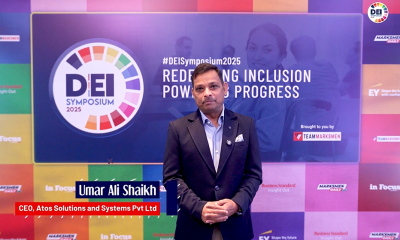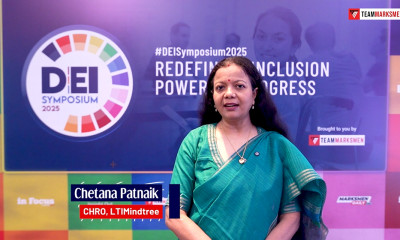Health
Wegovy is Not the Solution for India’s Growing Obesity Epidemic
Published
6 months agoon
By
Ann Uruvath
India, a nation once predominantly concerned with undernutrition, is now battling a rapidly rising obesity crisis. Traditionally considered a problem of high-income Western countries, obesity has emerged as a major public health issue across Indian society, affecting people across age groups, income levels, and geographies. Recent studies indicate that one in four Indians is now overweight or obese—a staggering statistic that underscores the severity of the situation. As urbanization, technological advances, and changing dietary patterns redefine Indian lifestyles, obesity has quietly grown into one of the most serious health challenges facing the country today.
Understanding Obesity: More Than Just Excess Weight
Obesity is a chronic, multifactorial disease characterized by the accumulation of excessive body fat, which can impair health. It is typically measured using the Body Mass Index (BMI), with a BMI of 25 to 29.9 considered overweight and 30 or higher defined as obese. However, obesity is far more complex than a simple measure of body weight. It is closely associated with a host of serious health conditions such as type 2 diabetes, cardiovascular disease, high blood pressure, certain cancers, respiratory issues, and musculoskeletal disorders. In India, obesity often presents alongside micronutrient deficiencies, meaning people may consume excess calories but still lack essential nutrients—a condition referred to as hidden hunger. This phenomenon contributes to a unique and dangerous form of malnutrition where both obesity and nutrient deficiencies coexist.
The Roots of India’s Obesity Crisis
Several interconnected factors are driving India’s obesity epidemic. Rapid urbanization has led to a surge in sedentary lifestyles, with reduced physical activity becoming the norm. People now spend more hours in front of screens—whether at work, school, or home—while manual labor and outdoor recreation continue to decline. At the same time, traditional diets rich in vegetables, legumes, and whole grains are being replaced by processed foods high in sugar, salt, and unhealthy fats. The growing popularity of fast food, sugary beverages, and packaged snacks has become a key contributor to rising waistlines.
Socioeconomic changes have also played a significant role. As disposable incomes increase, particularly in urban areas, there is greater consumption of convenience foods and a shift toward motorized transport. Moreover, genetic predisposition to central obesity, insulin resistance, and metabolic syndrome is higher among South Asians, making Indians more vulnerable to weight-related complications even at lower BMI levels than Western populations. The increasing prevalence of stress, irregular sleep patterns, and mental health issues further exacerbates the situation by disrupting hormonal balance and promoting overeating.
Wegovy: A Breakthrough in Modern Obesity Treatment
In response to the growing global burden of obesity, science has developed innovative pharmacological solutions, and one of the most promising is Wegovy. Known generically as semaglutide, Wegovy is a once-weekly injectable medication that has shown significant effectiveness in promoting weight loss. Originally approved for managing type 2 diabetes under the name Ozempic, semaglutide was later repurposed and approved specifically for weight management due to its ability to mimic the hormone GLP-1 (glucagon-like peptide-1). This hormone helps regulate appetite and food intake by acting on the brain’s hunger centers and slowing gastric emptying, which makes individuals feel fuller for longer periods.
Clinical trials of Wegovy have demonstrated remarkable results. Participants in key studies lost, on average, 15 to 20 percent of their body weight over the course of 68 weeks, significantly more than previous weight-loss drugs. This level of weight reduction is not only statistically impressive but also clinically meaningful, as it greatly reduces the risk of developing obesity-related complications such as heart disease and diabetes. The medication is now approved for use in several countries, including the United States, Canada, the European Union, and Australia. Although Wegovy is not yet widely available in India, there is growing interest among healthcare providers in introducing it as part of a broader strategy for managing obesity.
Despite its promise, Wegovy does face challenges related to accessibility, affordability, and long-term adherence. The cost remains high, making it inaccessible to many in low- and middle-income countries. There are also concerns about side effects, including nausea, gastrointestinal discomfort, and potential risks in patients with certain medical conditions. However, for individuals struggling with severe obesity who have not seen results through lifestyle modifications alone, Wegovy represents a potentially transformative option.
The Way Forward: Beyond Medication
While Wegovy offers a significant breakthrough, it should be viewed as a component—not the cornerstone—of a comprehensive obesity management strategy. Long-term success in tackling obesity requires a broader, more integrated approach. Lifestyle changes, including balanced nutrition and regular physical activity, remain fundamental. Mental health support is equally critical, as psychological factors like stress, depression, and low self-esteem often accompany or drive overeating.
Public policy also has a crucial role to play. Governments need to promote awareness campaigns that educate citizens about healthy food choices and the importance of physical activity. Schools must incorporate regular physical education and nutrition literacy into their curricula. Urban planning should prioritize green spaces, pedestrian walkways, and cycle tracks to encourage movement. At a regulatory level, food labeling laws should be strengthened, and the marketing of junk food, especially to children, should be strictly monitored. Fiscal tools like taxes on sugary beverages and incentives for healthy food production could further shift population-level behaviors.
In India, combating obesity also means addressing cultural attitudes toward body weight, health, and fitness. Community-level interventions, accessible nutrition counseling, and inclusion of obesity care in primary health services are essential to reach rural and underprivileged populations.
Conclusion: Confronting the Crisis with Innovation and Urgency
Obesity is no longer a distant or minor concern—it is one of India’s most urgent public health threats. As the burden of chronic diseases grows and healthcare costs soar, addressing obesity must be a national priority. The emergence of scientifically validated treatments like Wegovy offers new hope, but it cannot work in isolation. A united effort involving healthcare providers, policymakers, communities, and individuals is vital.
Obesity is not merely a matter of personal responsibility; it is a systemic issue that reflects larger societal and economic trends. The future of India’s health will depend on its ability to recognize obesity for what it truly is—a complex, multifaceted disease—and to respond with the seriousness, compassion, and innovation it deserves. Only then can the nation begin to reverse the tide and build a healthier, more resilient population.
You may like
-


Umar Ali Shaikh, CEO, Atos Solutions and Systems Pvt Ltd
-


Chetana Patnaik, CHRO, LTIMindtree
-


Davis John, CHRO, Raymond Realty
-


Justdial releases ‘How India Searched in 2025’ report, Decoding India’s evolving consumer behaviour
-


From Intention to Action: Health Priorities in a High-AQI, High-Pressure Environment
-


The Future of Air: How 2026 Could Transform India’s Urban Breathability


